|
FETA CHEESE
It is used in all types of meals, used as a stuffing, fried as in Saganaki, as a table cheese - drizzled with olive oil and oregano and served as a meze with drinks. It is famously known for being crumbled over a Greek salad, and as a filling for cheese pies - Tiropita, and many other pies. It is used for sweets, sweet pastries, as well as cheesecake. It is the most versatile of all cheeses.
You will now find almost every cafe will be using feta in one of their meals. It is ideal for light, healthy dishes has a good strong taste, and contrasts well with colourful salads and other foods.
Feta is made either completely from sheep's milk or can be mixed with up to 30% of goat's milk. It is a soft white cheese, with a salty, tangy taste and a unique, crumbly texture. It can range from mild to sharp. The milk fat content of feta ranges from 45 to 60 percent.
You can see the Greeks love their feta cheese! With much of the Greek landscape being mountainous and hilly, it was not suited for cows. Sheep and goats fared better in this countryside, were ideal as they could clamber over the mountains, produced milk as well as their meat. Sheep would travel over good distances every day to feed, and on the way would munch on a variety of plants, mountain grasses and herbs. In these regions, harmful substances such as pesticides and fertilisers were very scarce, so the milk these sheep produced was organically superior.
Greece has been running a long legal battle in the European Courts to recognise that feta is a Greek cheese. This is due to other countries such as Denmark and France producing white cheeses, mostly from cow's milk and calling it Feta. In 2005, Greece won the battle and Feta is now a PDO which stands for Protected Designation of Origin. This means that in the European Union, no other country can call their cheese "Feta". It now comes under strict production guidelines, and can only be called feta if it is made exclusively with sheep's milk, with the addition of up to 30% goat's milk from and in Greece using traditional methods.
Other countries within Europe either have to have their own name for this cheese or can call it "Greek Style Cheese". Of course, countries bordering Greece, were probably making this cheese before governments started putting up borders. This will help to maintain the standard and quality of Greek Feta Cheese.
Feta can dry out easily and sour quickly, so always keep in the refrigerator and store it in brine. Put it in a deep container and immerse it in water. Pour a good quantity of salt over the feta and ensure the feta is submerged in the liquid and it will keep for longer. Rinse the brine off the feta before using. If the feta you have bought is too salty, you can soak it in milk to dilute the salt. This will not likely be necessary with imported varieties, however I have had local made feta in Crete which could have done with this, it was so salty I couldn't taste the cheese!
Calories in Feta Cheese1 oz of feta cheese contains
75 calories How to Make Feta Cheese4kg of milk will make 1kg feta. Visit some more of our popular pages!
|





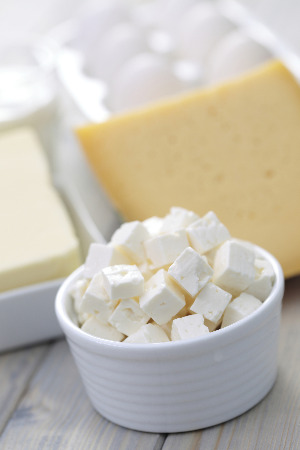 Feta cheese is the most famous of Greek cheeses and the most popular. It has been and still is an important part of the Greek
diet.
Feta cheese is the most famous of Greek cheeses and the most popular. It has been and still is an important part of the Greek
diet. 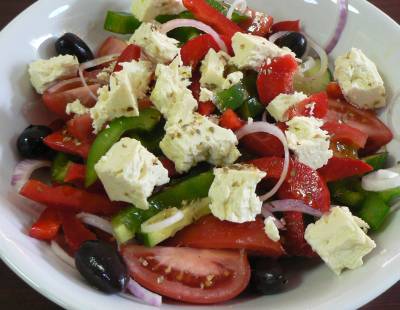 Over the last couple of decades, the rest of the world has fallen under the spell of feta, and understood what a fantastic cheese this
really is.
Over the last couple of decades, the rest of the world has fallen under the spell of feta, and understood what a fantastic cheese this
really is.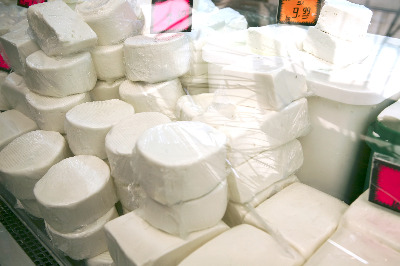 In Greece, 12kg of feta is consumed per person per year!
In Greece, 12kg of feta is consumed per person per year!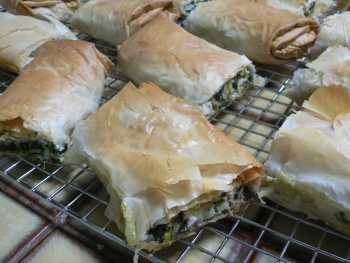 With the sheep always on the move to get their food, they would never get fat and so consequently the
milk produced was low in fat. It is these factors which give the feta cheese the characteristically pure, white colour. Feta which is not produced in
Greece and in these conditions need to be chemically treated to obtain that sparkling white colour.
With the sheep always on the move to get their food, they would never get fat and so consequently the
milk produced was low in fat. It is these factors which give the feta cheese the characteristically pure, white colour. Feta which is not produced in
Greece and in these conditions need to be chemically treated to obtain that sparkling white colour. The history of the Greek word "feta" comes from the Italian word "fetta", which means "slice". Although feta has been made since ancient Greece,
it may have been the cheese Homer described with the Cycops, it became known as feta in the 17th century, whilst under
Venetian influence. The slice refers either to the method of making it when they slice the curd or to the way it is served, in
thick slices.
The history of the Greek word "feta" comes from the Italian word "fetta", which means "slice". Although feta has been made since ancient Greece,
it may have been the cheese Homer described with the Cycops, it became known as feta in the 17th century, whilst under
Venetian influence. The slice refers either to the method of making it when they slice the curd or to the way it is served, in
thick slices.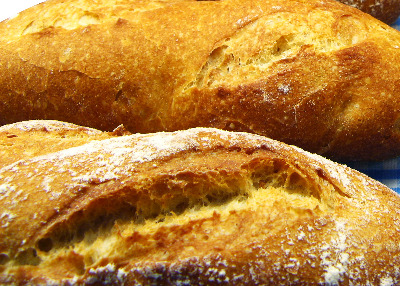 You can freeze feta, although it won't have quite the same taste and texture once defrosted. Wrap in airtight plastic wrapping
and freeze. Leave in the fridge, in its wrapping, whilst defrosting. Once defrosted, it is better suited to being crumbled over a
salad or used in cooking, rather than eaten as a table food.
You can freeze feta, although it won't have quite the same taste and texture once defrosted. Wrap in airtight plastic wrapping
and freeze. Leave in the fridge, in its wrapping, whilst defrosting. Once defrosted, it is better suited to being crumbled over a
salad or used in cooking, rather than eaten as a table food.

New! Comments
Have your say about what you just read! Leave me a comment in the box below.